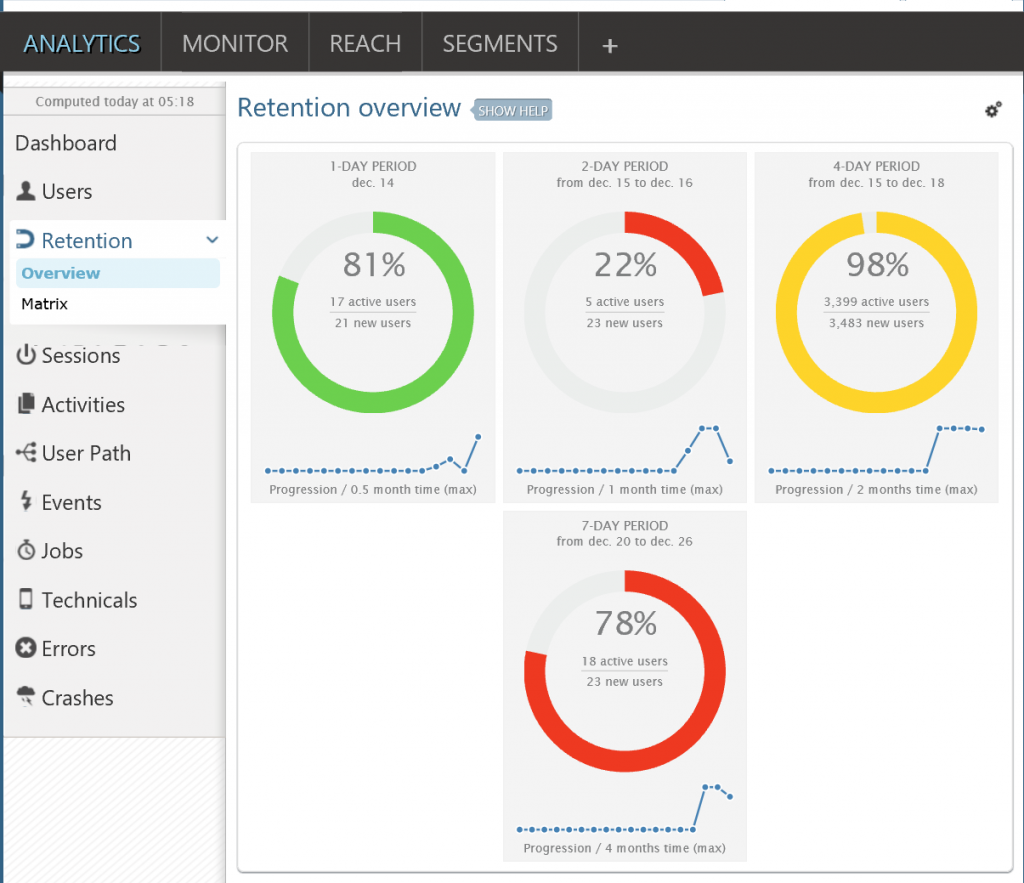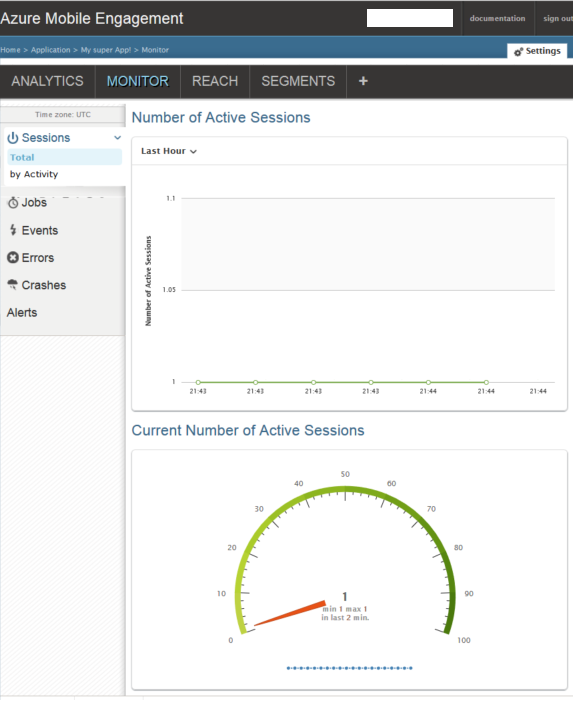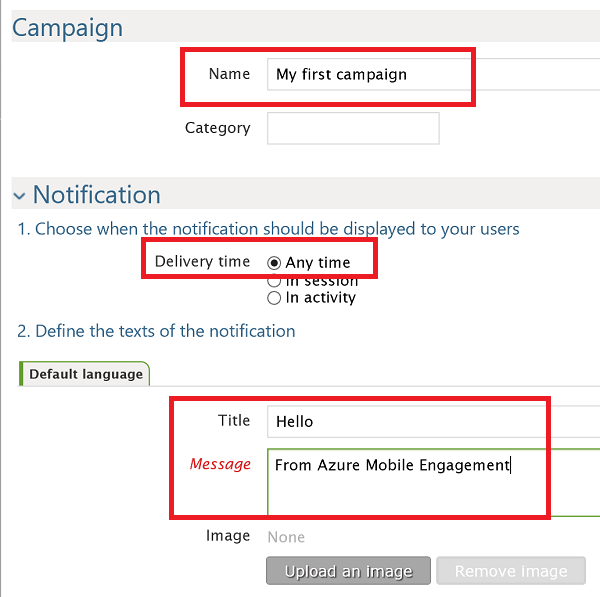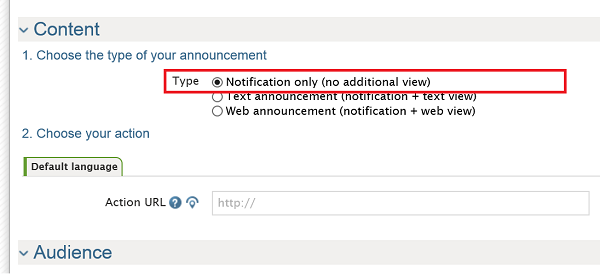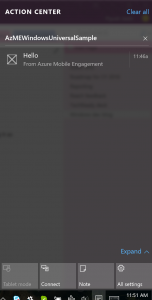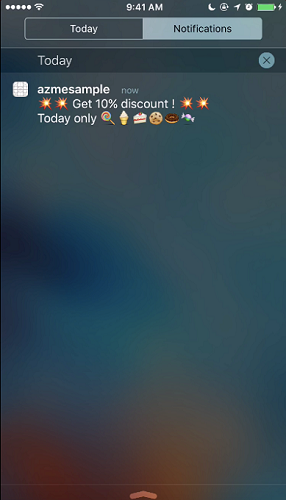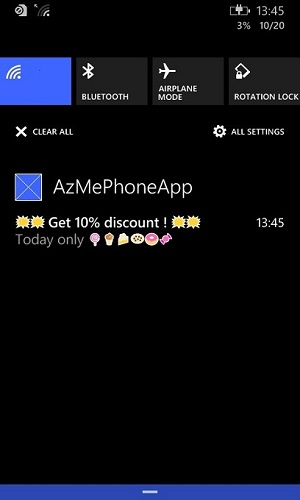You can capture behavioral analytics about your app users, segment the audience and then send very targeted and personalized push notifications to specific segments, using our Mobile Engagement portal as shown below:
Here are some example scenarios where you will find this useful:
- You have an e-commerce app and users come to your app, browse your catalog, and even add items to their shopping cart but don’t make a purchase. You can use the Azure Mobile Engagement platform to run a push campaign targeting only this set of customers to remind them about their unpurchased items or, even better, send them a coupon to win them over to complete the purchase in your app.
- You have multi-level game and you see from the Azure Mobile Engagement dashboard that many users take unusually long time to cross one specific level. You can target this segment of users from the platform to offer some tips or hints or even simplify the level to reduce their frustration and leaving your game app forever.
Integrating Azure Mobile Engagement into your app.
Here we will go through a quick tutorial on integrating Azure Mobile Engagement in to a Windows app to send targeted push notifications (and yes, Windows 10 OS has a notification center—just like your phone—which can show these targeted notifications to your app users). The full tutorial is available on the Azure documentation site
- Create a Mobile Engagement App in the Microsoft Azure portal using the steps described on the Azure documentation site.
- Open Visual Studio and create a Universal Windows app or use your own UWP app.
- Install the Azure Mobile Engagement Windows SDK from Nuget in your project and connect it with your Mobile Engagement app by providing the connection string to it.
- In the UWA you just created, add a method dedicated to the Mobile Engagement initialization:
[code lang=”csharp”]
private void InitEngagement(IActivatedEventArgs e)
{
EngagementAgent.Instance.Init(e);
EngagementReach.Instance.Init(e);
}
[/code]
- Initialize the SDK in the OnLaunched and OnActivated method:
[code lang=”csharp”]
protected override void OnLaunched(LaunchActivatedEventArgs e)
{
InitEngagement(e);
//… rest of the code
}
protected override void OnActivated(IActivatedEventArgs e)
{
InitEngagement(e);
//… rest of the code
}
[/code]
- Replace the base class of MainPage from Page to EngagementPageOverlay:
[code lang=”csharp”]
class MainPage : EngagementPageOverlay
[/code]
This is the basic way to start capturing screen level information automatically via our SDKs. If you cannot override the page, then we provide explicit methods in the SDK that you can call from your code instead.
- Replace the Page in the XML tag name with engagement:EngagementPageOverlay in MainPage.xaml:
[code lang=”csharp”]
xmlns:engagement="using:Microsoft.Azure.Engagement.Overlay"
[/code]
Your app is now enabled to send logs to the Mobile Engagement app as well as receive push notifications. You can do additional instrumentation in your app for detailed logging as described in the documentation. Once you start your app and log in to the Mobile Engagement portal, you will see a session recorded in the gauge and the line charts.
Creating a push campaign for the app to receive notifications.
- Go to the Reach tab on the Mobile Engagement portal and create an announcement with the following parameters as shown in the image below. Note that this notification is configured with Delivery time = Any time. This means that the app user will receive the notification as an out-of-app notification if the app is not open as an in-app notification when the app is open.
- Configure this notification as “Notification only.” Note that you can also configure your in-app notifications with rich HTML content by sending it as “Web announcement.”
- You will see the following notification slide in from the bottom right on a Windows 10 PC.
You can also see this in the Windows 10 notification center.
Find SDKs for all platforms.
We offer SDKs for Windows Platform (which work on Universal Windows 10/8/8.1 Apps, Windows Phone Silverlight), iOS, Android, and Cordova/Phonegap.
Here is an example of similarly sending Emoji notifications to iOS, Android, and Windows Phone using our platform.
You can complete a basic integration in your application in just a few days which will allow you to quickly start tracking your users, sessions, and screens, segment your audience, and send targeted push notifications.
To check out some more scenarios where you can implement Azure Mobile Engagement, you can take a look at our scenarios whitepaper and get started with our documentation on Azure Documentation site.
Written by Piyush Joshi, Senior Program Manager for Azure Mobile Engagement

